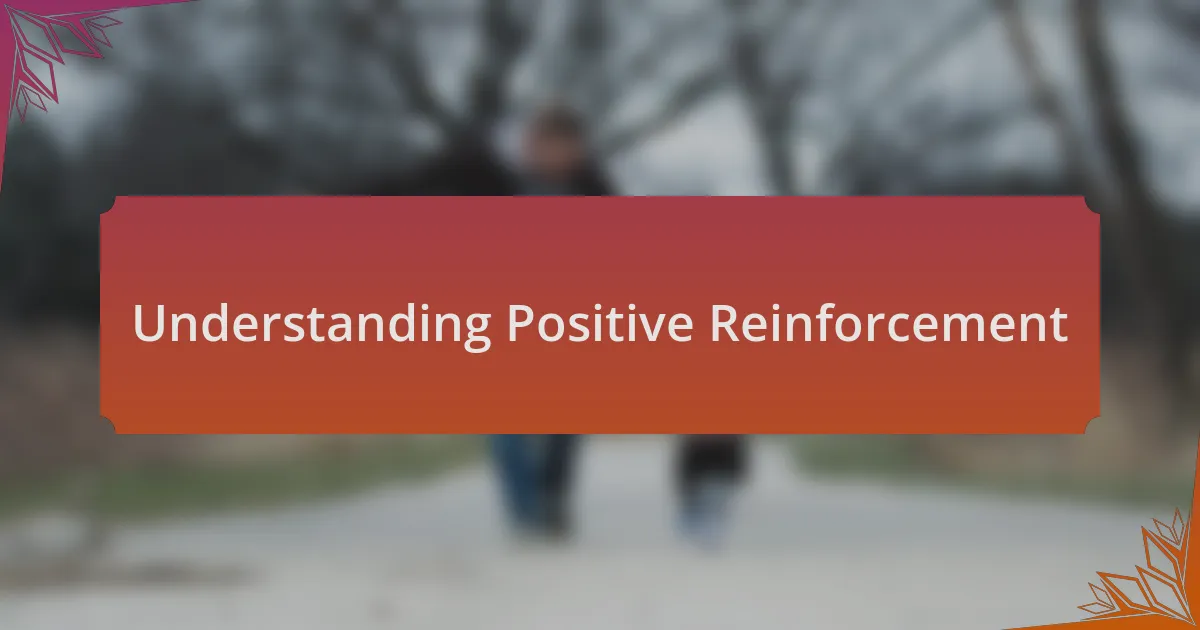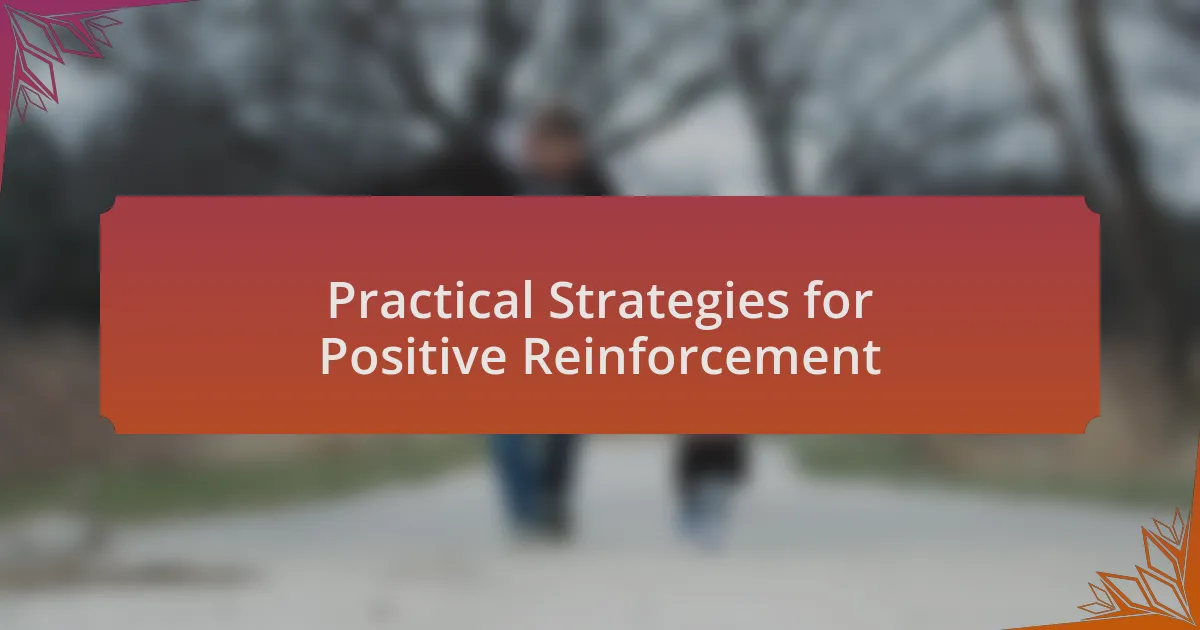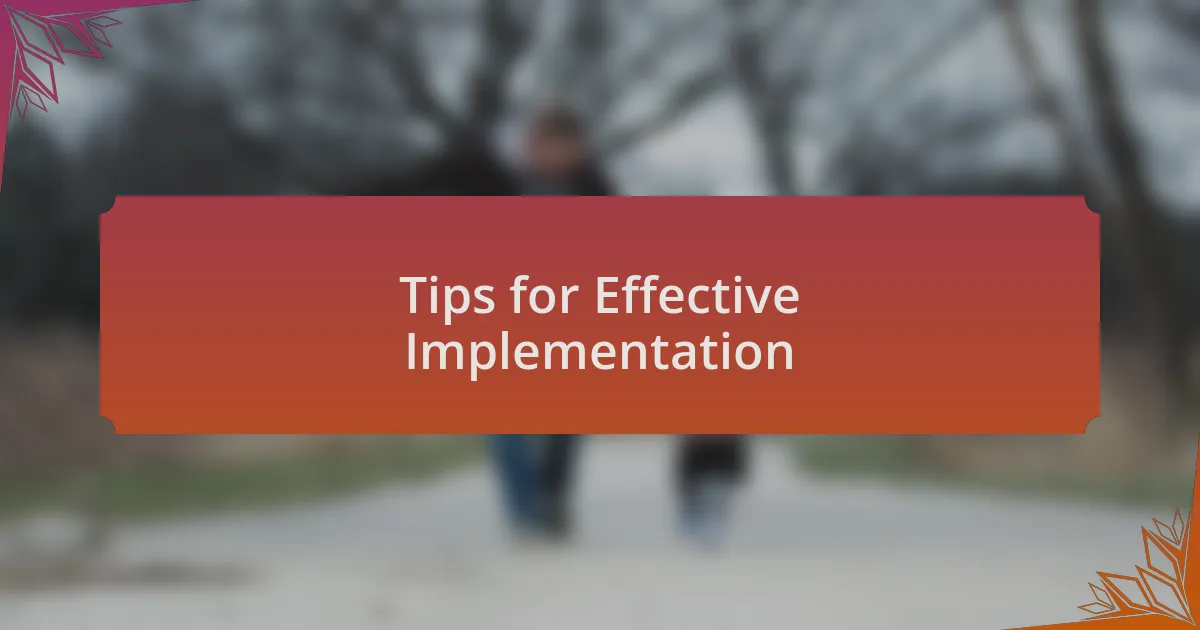Key takeaways:
- Positive reinforcement encourages desirable behaviors through rewards and acknowledgment, fostering intrinsic motivation and confidence.
- Immediate recognition and the creation of routines, like “praise moments,” enhance the impact of positive reinforcement in family dynamics.
- Celebrating small wins and varying rewards keeps children engaged and motivated, reinforcing consistency and responsibility.
- Resources such as books, online courses, and parenting workshops provide valuable insights and community support for implementing positive reinforcement strategies.

Understanding Positive Reinforcement
Positive reinforcement is a powerful tool that fosters desirable behaviors by rewarding them. For instance, when my child cleaned up their room without being asked, I praised their effort and even offered a small reward. It amazed me how much that simple acknowledgment motivated them to do the same again and again.
I often reflect on how intrinsic motivation can grow through positive reinforcement. When my daughter learned to tie her shoes, a mix of verbal praise and a sticker chart helped her feel proud of her accomplishment. Have you ever noticed how a little encouragement can lead to a big boost in confidence? It’s interesting how a genuine “Great job!” can spark a child’s desire to tackle more challenges.
In my experience, consistency is key to making positive reinforcement effective. I remember setting clear expectations for my son about completing homework on time. Each time he met that goal, I would celebrate his success with a fun family activity. It created a positive feedback loop, reinforcing not just the behavior but also our bond as a family through shared experiences.

Practical Strategies for Positive Reinforcement
Incorporating tangible rewards can magnify the effects of positive reinforcement. When my son successfully completed his chores, we implemented a points system where he could earn points for desired behaviors. It was fascinating to see his excitement when he realized those points could be exchanged for a fun outing or a special toy. This approach not only encouraged him to take on responsibilities but also turned even mundane tasks into engaging challenges.
Another effective strategy is to use immediate acknowledgment. I’ve found that when my daughter accomplishes something, whether it’s sharing with her sibling or simply being polite, I make it a point to celebrate right then and there. By doing so, I tap into her emotional landscape. Don’t you feel that instant recognition validates their efforts and reinforces their desire to repeat those actions?
Creating a routine around positive reinforcement can further enhance its impact. For instance, I established “praise moments” at dinner, where each family member shared a positive behavior they noticed in another. This not only promotes a culture of appreciation but also encourages my kids to be more observant of each other’s efforts. It’s these little rituals that add a layer of joy to our parenting journey, reminding us all of the strength found in support and acknowledgment.

Positive Reinforcement Case Studies
One memorable instance of positive reinforcement occurred when my youngest daughter, excited about her recent progress in reading, decided to tackle a challenging book series. I could see her determination and enthusiasm, so I promised her a special movie night for every three books she completed. Watching her light up with each book she finished made me realize how powerful that little incentive was in motivating her to push through difficulties. Who wouldn’t love a cozy movie night as a reward for hard work?
Another case that stands out involved my son’s experience with sports. After a tough match, he was feeling disheartened. Instead of focusing on the score, I praised his teamwork and effort, reminding him of a time he helped a teammate score. After just a few moments of encouragement, I saw his confidence swell, and suddenly, he was eager to give it another shot. Isn’t it incredible how a few supportive words can shift a child’s perspective and instill resilience?
I also remember a time in our family routine that truly highlighted the benefits of positive reinforcement. We created a ‘gratitude jar’ where every member could drop in notes about something they appreciated someone else for—a simple act that not only reinforced positive behaviors but also fostered a supporting family dynamic. Each note brought smiles and reinforced those behaviors further, creating an uplifting environment where kindness was the norm. Doesn’t it amaze you how acts of acknowledgment can ripple out, encouraging not just individual change but a whole culture of positivity?

Tips for Effective Implementation
To effectively implement positive reinforcement, consistency is key. I’ve found that setting clear expectations before rewarding behavior helps children understand what is desired. For instance, when my daughter completed her chores, I would remind her of the reward waiting after the task, ensuring she recognized the direct connection between her actions and the positive outcome. This clarity not only motivates but also helps build responsibility.
Another useful strategy is to celebrate small wins. One day, my son struggled with his math homework, and instead of focusing on the mistakes, I celebrated his effort to tackle each problem, even the difficult ones. I remember saying, “I’m proud of you for trying so hard,” and his face lit up with a sense of achievement. It’s amazing how acknowledging effort, no matter how small, can dramatically boost a child’s motivation and self-efficacy.
Also, incorporating variety into rewards can keep the momentum going. I remember introducing surprise rewards after a week of consistent good behavior—like a spontaneous trip to the ice cream shop. The novelty kept my kids excited and engaged, knowing that positive behavior could lead to unexpected treats. Doesn’t it feel good to break the routine and create memorable experiences while reinforcing desirable actions?

Resources for Further Learning
For those eager to dive deeper into positive reinforcement, there are numerous books and resources available that can enhance your understanding. I recently picked up “The Power of Positive Parenting” by Glenn Latham, and it offered fantastic insights that resonated with my approach. Have you ever found a book that reframed your perspective entirely? This one truly did for me, emphasizing the importance of nurturing positive behaviors in a constructive way.
Online courses can also be a valuable tool. I took a course on positive discipline that transformed my parenting toolkit. It not only provided real-life strategies, but it also fostered a community of like-minded parents sharing their experiences. Participating in discussions really helped me see the nuances in applying positive reinforcement. Could there be a better way to learn than exchanging views with others facing similar challenges?
Finally, don’t overlook local parenting workshops or support groups. When I attended a workshop at my child’s school, it was eye-opening. Listening to other parents share their successes and struggles made me realize I wasn’t alone in this journey. The sense of camaraderie and shared learning was inspiring. Have you joined any local parenting events? They might just spark new ideas and provide the encouragement we all need as we navigate this rewarding yet challenging path.